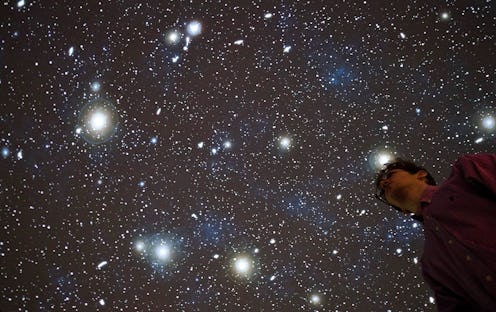News
There Could Be Galaxies Of Dark Matter Out There
Scientists say that a new kind of telescope hack has discovered galaxy-type objects made up of dark matter, and without any kind of observable stars. So, what exactly is dark matter? While one of the new structures observed with the experimental Dragonfly telescopic array have roughly the same amount of mass as our very own Milky Way, that doesn't mean that we know exactly what dark matter is made up of, yet.
Depending on who you ask, dark matter, or mass that doesn't interact with photons of light in the way that our eyes can detect, makes up anywhere from 27 percent to 83 percent of the known universe. While we can't observe dark matter directly with our eyes, we've been able to infer its existence by studying how objects interact with each other, and the space around them. How? Well, even though we can't "see" dark matter directly, it does have mass, and therefore does exert force on nearby objects.
The scientists who worked on the Dragonfly array were able to pick up ghostly scatterings of diffuse matter present on the edges of several known galaxies by processing several photos taken from an array of 24 ultra-high tech, consumer telephoto lenses from Canon. By compounding the lenses and using custom software to "stitch" the photos together, scientists have been able to see groupings of dark matter, called "ultra diffuse galaxies" that seem to be held together by dark energy. In other words, there are large cosmic structures out there with no discernible center of gravity — like a heavy object such as a star — to keep it all together.
There are still a few other ideas floating around that try to explain what is going on with all of the unaccounted for mass that we can't see with our eyes or our current level of imaging technology. Although, as the international team behind the Dragonfly array has found, that is a rapidly evolving field. One such theory is the so-called "dark fluid" hypothesis which posits that dark energy and dark matter just exist in a deconstructed blob or soup without having a whole lot of effect on visible matter.
While it still isn't clear to researchers what exactly dark matter is, and how, if at all, it can affect life on Earth in perceptible ways, being able to get a clearer image of dark galaxies will undoubtedly help researchers shed more light on the subject.
